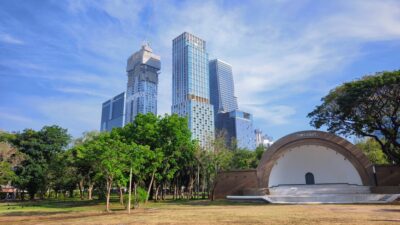Thailand extends visa-free entry period to Hongkongers, plus more stories

For PropertyGuru’s real estate news roundup, Thailand had extended the visa-free entry period for holders of the Hong Kong Special Administrative Region passport from 30 to 60 days. In other headlines, Manila’s prime office costs are down 3.2 percent in the year’s second quarter. Finally, the growing demand for data centre space means developers seek new markets and innovative locations.
Thailand extends visa-free period for Hong Kong passport holders to 60 days
The department said on Tuesday (16th July) that Thailand had extended the visa-free entry period for holders of the Hong Kong Special Administrative Region (HKSAR) passport from 30 to 60 days, adding that it would bring “great travel convenience” to Hongkongers.
Thailand, which is located along China’s Belt and Road infrastructure initiative and a member of the Association of Southeast Asian Nations (ASEAN), has a “close relationship” with Hong Kong in terms of people-to-people and cultural exchanges, a spokesperson for the Immigration Department said in HKFP.
“Under the Belt and Road Initiative, this extension of the period of visa-free entry will bring greater travel convenience to holders of HKSAR passports and strengthen the tourism, cultural and economic ties between the two places,” a statement from the government read.
Manila prime office cost down 3.2 percent in Q2, third cheapest in APAC
Manila, which remained the third-cheapest prime office market among 23 cities in the Asia-Pacific (APAC) region in the second quarter (Q2), saw a 3.2 percent decline in occupancy cost compared with the same period last year, according to real estate consultancy Knight Frank in a report in BusinessWorld.
The average prime office cost in Manila was USD27.93 per square foot for the second quarter, down from USD28.28 per square foot in the previous quarter, data from the latest Knight Frank Asia-Pacific Office Markets report showed. Manila’s decline of 3.2 percent slightly exceeded the regional average decrease of 3.1 percent during the period.
Growing demand pushes Asia Pacific data centres into new areas
The growing demand for data centre space means developers are looking for new markets and innovative locations to satisfy the customer appetite.
New uses such as generative AI (the technology behind applications such as ChatGPT), 5G networks, and the Internet of Things are driving demand, as are regulatory pressures: many jurisdictions require their citizens’ data to be held locally.
Structure Research estimates the region’s colocation data centre market size was around 10,233MW of critical IT capacity in 2023. It is projected to grow at a five-year compound annual growth rate (CAGR) of 13.3 percent, nearly doubling to 19,069MW by 2028.
Mainland China currently has the largest number of data centres, but smaller developed markets such as Australia, Hong Kong, and Singapore have the greatest concentration of sites.
“Data centres are essential infrastructure for our increasingly digitised business and personal lives,” says Simon Smith, Regional Head of Research & Consultancy, Asia Pacific at Savills. “Real estate investors have recognised this and are investing significant capital in the sector.”
The Property Report editors wrote this article. For more information, email: [email protected].
Recommended
Why Asia’s mixed-use developments are the future of real estate
Dynamic integrated communities are fusing real estate with commercial, leisure, and other amenities
Transforming cities worldwide: Surbana Jurong’s vision for the future
Surbana Jurong excels in master planning, infrastructure, and urban development
Inside Asia’s commercial real estate: The cities thriving and those facing tough times
Shifting consumer preferences, and fluctuating economic policies mean commercial real estate investors in Asia must remain agile
Why young Asians are choosing singlehood and reshaping real estate trends
Marriage is out, and singlehood is in as young Asians subvert convention to explore alternative paths in real estate






